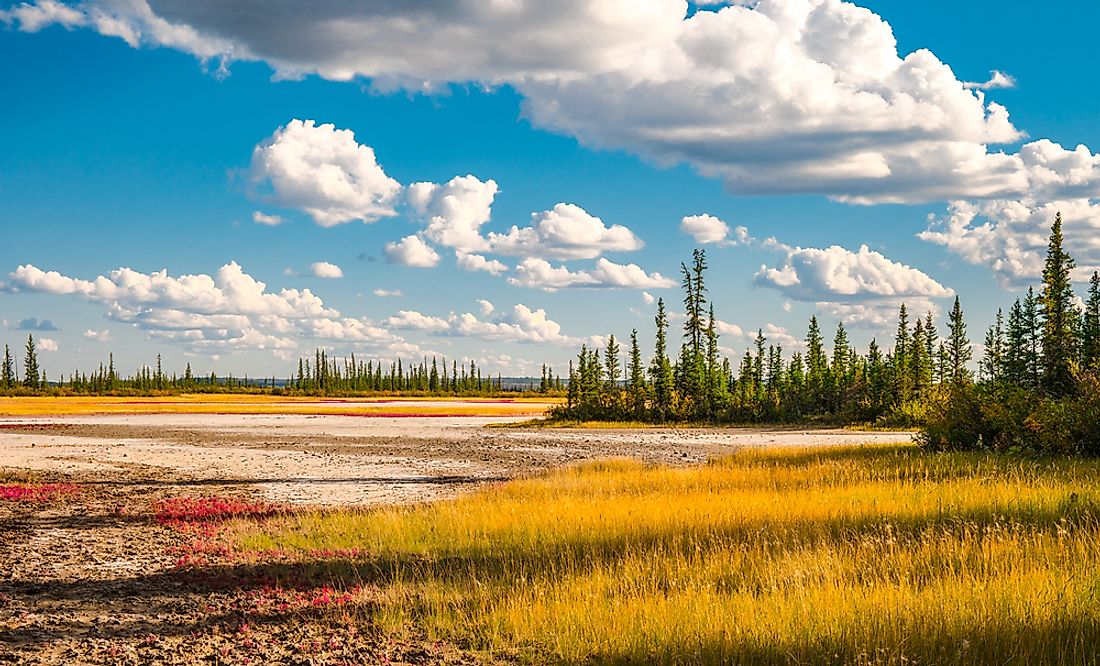The Biggest National Parks And Reserves In Canada

Parks Canada is the agency that is responsible for the management of national parks and reserves in the nation. It was enacted in 1930 under the Canada National Parks Act and revised in 2000. It is under the Minister of the Environment of the government of Canada. The main aim of Parks Canada is to preserve and protect the natural and cultural heritage of Canada such as its wilderness and natural water resources. The agency at present maintains four National Marine Conservation Areas, 46 National Parks, one National Landmark, and 168 National Historic Sites. The first national park in Canada, Banff National Park was created in 1885 with Yellowstone as an inspiration. The largest national park in Canada is Wood Buffalo National Park in Alberta, which covers a total area of 44,807 square km.
Parks and Reserves in Canada
The Canadian Commission of Conservation was responsible for managing natural resources for long term use in 1909. It pioneered the concept of wilderness as a natural resource that could be tapped for future profit with good management practices. However, the Alpine Club had a different idea that proposed the pure conservation of wilderness without any development. Although these differing conservation methods were at odds with each other, by 1930, it was accepted norm that the national parks were not an exception to profit-making.
The Largest in the Parks Canada System
The Wood Buffalo National Park (1922) is the largest national park in Canada at 17,300 square miles, located in Alberta, Northwest Territories. It was created in 1922 as a sanctuary for the last bison population in the nation and aboriginal residents. It was declared a UNESCO World Heritage Site in 1983 and contains whooping cranes, peregrine falcons, and beavers. The Quttinirpaaq National Park (2001) at 14,585 square miles in Nunavut is second largest in Canada. Its wildlife boasts of seals, polar bears, narwhals, and walruses. It was declared a UNESCO World Heritage Site in 2004. The Nahanni National Park Reserve (1976) at 11,583 square miles in the Northwest Territories is third largest in the country. It has tundra, spruce and aspen forests, hot springs and many species of flora and fauna. Virginia Waterfalls is one of its wonders, as it is twice the height of the famous Niagara Falls. The Sirmilik National Park (2001) at 8,571 square miles in Nunavut is fourth largest in the nation. It has valleys, glaciers, and red rock hoodoos under the midnight sun. Polar bears, seals, and walruses abound with narwhals and beluga whales. The Kluane National Park (1993) and Reserve (1976) at 8,499 square miles in the Yukon is fifth largest.
Other Massive Canadian National Parks
Next in order are Ukkusiksalik National Park (2001) at 8,064 square miles in Nunavut, the Auyuittuq National Park (2001) at 7,370 square miles in Nunavut, the Tuktut Nogait National Park (1996) at 6,309 square miles in the Northwest Territories, the Aulavik National Park (1992) at 4,710 square miles in the Northwest Territories, the Wapusk National Park (1996) at 4,431 square miles in Manitoba, the Qausuittuq National Park (2015) at 4,247 square miles in Nunavut, and the Jasper National Park (1907) at 4,200 square miles in Alberta. Spanning between 2,500 and 4,000 square miles are the Ivvavik National Park (1984) at 3,926 square miles in the Yukon, Torngat Mountains National Park (2008) at 3,745 square miles in Newfoundland and Labrador, and Banff National Park (1885) at 2,564 square miles in Alberta.
Tourism in Canadian National Parks
The development and prosperity of Canadian national parks and reserves were planned with the construction of the Trans-Canada Highway. The attractions such as wildlife and wilderness scenery were afforded to tourists by modern rest stops and picnic areas. Tourist revenues to Banff National Park enabled the town of Banff to prosper. Coal mining and tourism stood along side by side in the profit-making and conservation of these parks in Canada.
The Biggest National Parks And National Reserves In Canada
| Rank | Name | Location | Area |
|---|---|---|---|
| 1 | Wood Buffalo | Alberta Northwest Territories | 44,807 km2 |
| 2 | Quttinirpaaq | Nunavut | 37,775 km2 |
| 3 | Nahanni (Reserve) | Northwest Territories | 30,000 km2 |
| 4 | Sirmilik | Nunavut | 22,200 km2 |
| 5 | Kluane (two units: a Park and a Reserve) | Yukon | 22,013 km2 |
| 6 | Ukkusiksalik | Nunavut | 20,885 km2 |
| 7 | Auyuittuq | Nunavut | 19,089 km2 |
| 8 | Tuktut Nogait | Northwest Territories | 16,340 km2 |
| 9 | Aulavik | Northwest Territories | 12,200 km2 |
| 10 | Wapusk | Manitoba | 11,475 km2 |
| 11 | Qausuittuq | Nunavut | 11,000 km2 |
| 12 | Jasper | Alberta | 10,878 km2 |
| 13 | Ivvavik | Yukon | 10,168 km2 |
| 14 | Torngat Mountains | Newfoundland and Labrador | 9,700 km2 |
| 15 | Banff | Alberta | 6,641 km2 |











